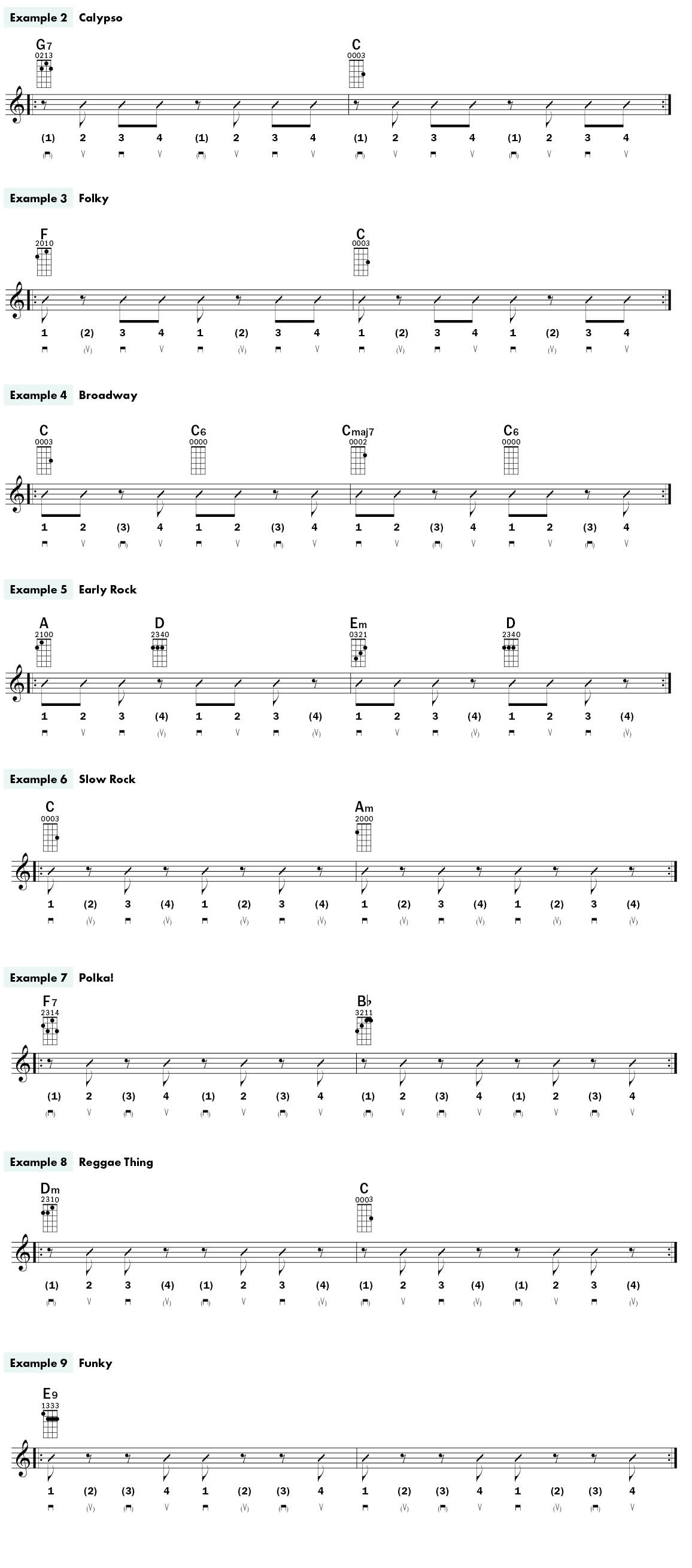Get Rhythm: How to Hold Down the Groove on Ukulele

BY DANIEL WARD | FROM THE SUMMER 2018 ISSUE OF UKULELE
We have all heard beautiful, clean, steady strumming. Rhythm is the heart and motor of any style. Without the magic of rhythm, the careful spell cast by a song is instantly broken. Hitting a wrong chord is no big deal, but if you skip a beat, it really knocks the groove for a loop and everyone can hear it.
Two things make for a solid strum: You have to hear it and you need to be able to play it.
Play what you hear!
It sounds so simple, but there can be bumps on the road to smooth strumming. Learning to relax and letting go of tension are keys to a good, solid groove in any style.
Here is a simple way to build any strum while letting go of bad habits and learning to feel and hear the rhythm. This connects the ear with the hand.
First, understand that the raw beat of any strum comes from the “down-up-down-up” pattern, and any strum—no matter how fancy—is made up of these basic building blocks. Mastering this basic motion is your key to good rhythm. These counting patterns simply take “down-up-down-up” and count 1–2–3–4. By saying the number out loud, this can be looped into a game that connects your ear with the motions.
Advertisement
Try the first pattern, shown in Example 1, placing your fretting hand lightly over the strings so you just hear a crisp scratching sound. The best way to a relaxed strum is with your wrist. Avoid moving your whole arm up and down by imagining you are flicking water off of your wet hand. Get used to the feeling of letting any tension go as you move down and up, and let your wrist be the center of the motion.

Now get your ear involved. In each of these patterns, a beat or two will be left out in order to create a rhythm. The most important thing to remember is that your hand keeps doing the same thing the entire time. Leaving out a beat can fool your ear into changing direction mid-strum. Overcoming this tendency and learning to feel the silent stroke down or up, is a major milestone to great rhythm playing.
To focus on the rhythm of your strumming hand, take a stab at each following pattern using your fretting hand to mute the strings. Play Examples 2–9 by leaving out the number and stroke in parentheses. This will create a musical pattern that your ear can follow. After learning each new pattern, go back to Ex. 1, and re-center until all the down-up-down-up, 1–2–3–4 strokes are even again. By methodically changing the numbers of the silent beats, a strong and steady feel for the sound will develop, merging what you play with what you hear. Some of the examples will be easier for you than others, and when you get to just downstrokes or just upstrokes, you can really get a feel for the silent beats. Once the scratch sound starts to work and you are getting it, try the suggested chords with each pattern, too.

Enjoy getting these phrases to sound smooth and up to speed. Each one will have a unique sound and will lend itself to different styles. After practicing these, not only should it be much easier to learn a new strum, it will also help with picking a rhythm up by ear. Do as much of this kind of work as you can, whether you are at home or strumming with friends.
And remember to relax, listen, and have fun!
Ukulele player and flamenco guitarist Daniel Ward is a popular instructor and performer. His latest book is Arpeggio Meditations for Ukulele.


